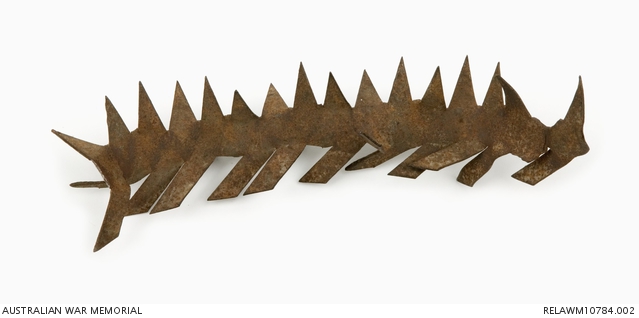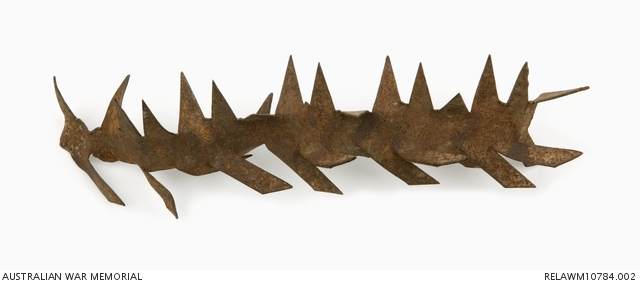| Place | Europe: Belgium, Flanders, West-Vlaanderen, Messines |
|---|---|
| Accession Number | RELAWM10784.002 |
| Collection type | Heraldry |
| Object type | Heraldry |
| Physical description | Steel |
| Maker |
Unknown |
| Date made | pre June 1917 |
| Conflict |
First World War, 1914-1918 |
Section of German razor wire : Messines


Flat, rusted piece of sheet steel, die cut along the long sides to create jagged barbs, giving an exagertaed saw edge appearance. Some of these barbs have been twisted.
This piece of German barbed wire is from Messines. Known as conertina, barbed tape or razor wire, it is made from die cut strips of flat sheet metal that has been cut to create pointed edges and twisted.
The Battle of Messines took place from 7 to 14 June 1917. The battale was a successful British assault on the Messines-Wytschaete Ridge, a strongly held strategic position on the Western Front, which had been held by the Germans since late 1914. The offensive operation was the product of long preparation, detailed planning and sound training carried out by General Plumer's Second Army. The initial assault was preceded by the detonation of 19 mines under the German font line which caused an estimated 10,000 German casualties. British, Australian and New Zealand infantry advanced behind a carefully co-ordinated artillery bombardment and took all their objectives within the first hours of the battle. German counter attacks the following day failed, and although German resistance continued until 14 June, British, Australian and New Zealand forces retained possession of the captured areas.